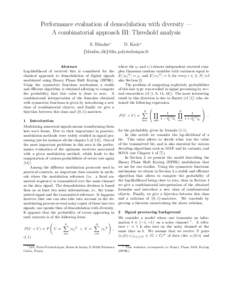<--- Back to Details
| First Page | Document Content | |
|---|---|---|
 Date: 2005-07-06 08:19:03Euclidean algorithm Exponentiation Factorial Λ-ring Mathematics Exponentials Combinatorics |
Add to Reading List |
| First Page | Document Content | |
|---|---|---|
 Date: 2005-07-06 08:19:03Euclidean algorithm Exponentiation Factorial Λ-ring Mathematics Exponentials Combinatorics |
Add to Reading List |